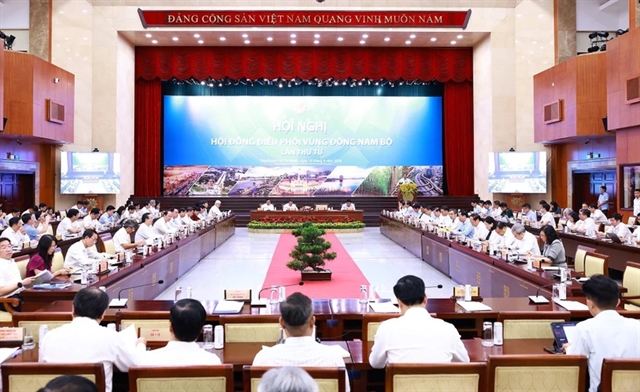 Life & Style
Life & Style

 |
| The fourth meeting of the Coordinating Council for the Southeastern Region takes place in HCM City on August 10. — VNA/VNS Photo |
HCM CITY — Prime Minister Phạm Minh Chính chaired the fourth meeting of the Coordinating Council for the Southeastern Region in Hồ Chí Minh City on August 10, sketching out ways for fuelling regional development.
During the first seven months of 2024, the southeastern region recorded fair growth but still fell short of expectations for it as a key and leading economic region of the whole country. Its economic growth stood at 5.58 per cent during the period, lower than the national average and only higher than that of the Central Highlands, the council reported.
Meanwhile, the region’s state budget revenue topped 391 trillion VNĐ (nearly US$15.6 billion), accounting for 38.1 per cent of the country’s total figure and ranking second after the Red River Delta. Exports were valued at US$59.2 billion, equivalent to 31 per cent of total overseas shipments and following the Red River Delta. Among the six economic regions, the Southeast saw the largest number of companies established and resuming operations between January-July, 58,246 – up 9.8 per cent, statistics show.
Regarding the Regional Master Plan for 2021-2030, with a vision to 2050, approved by the PM on May 4 this year, the Ministry of Planning and Investment is drafting a plan for implementing the master plan and collecting opinions from relevant sides to perfect it.
PM Chính, who is also Chairman of the Coordinating Council, said the recent socio-economic development results continue to reflect the region’s important role as an economic locomotive of Việt Nam and a pioneer in reform, creativity, dynamism, and development.
All the six localities, namely HCM City and the provinces of Bà Rịa-Vũng Tàu, Bình Dương, Bình Phước, Đồng Nai, and Tây Ninh, have completed the drafting of their master plans for verification. Five of the six master plans have been approved by the PM.
Recognising the region’s contributions to national socio-economic development, the Government leader pointed out that it still faces certain shortcomings, difficulties, and challenges.
Given this, he asked ministries, sectors, and the localities to invest efforts in keeping macro-economic stability, promoting growth, curbing inflation, ensuring major economic balances, and controlling public debts, government debts, and budget overspending.
In particular, HCM City needs to quickly complete its master plan to be submitted to the Government for approval.
PM Chính asked them to review legal bottlenecks to propose amendments, especially those in the Public Investment Law, speed up public investment disbursement, use public investment to attract private investment, and mobilise every resource for development investment.
It is important to foster the three traditional growth drivers of investment, export, and consumption, along with the new ones, including innovation, science - technology, green transition, digital transformation, and new industries like semiconductor, artificial intelligence, and cloud computing, he went on.
He requested close coordination among ministries, sectors, and the localities to tackle difficulties and facilitate development. Notably, they need to promote public investment disbursement, the effective application of the Fourth Industrial Revolution, and the training of high-quality human resources.
To ensure the effective implementation of the Regional Master Plan and maximise the Southeast’s potential and advantages, he demanded them fulfil the assigned tasks with the highest quality and quickly complete studies for regional and inter-regional projects, including the ones on an international financial centre in HCM City, a free trade centre in Bà Rịa-Vũng Tàu, the North-South Expressway section through the region, urban rail routes in HCM City, and the Biên Hòa-Vũng Tàu rail route.
PM Chính expressed his belief that with strong determination, support, and efforts by ministries, central sectors, enterprises, and people, the southeastern region will develop in accordance with the vision stated in the Regional Master Plan while the localities’ Party organisations, administrations, and people will harvest better results in fulfilling the set tasks and targets. — VNS




